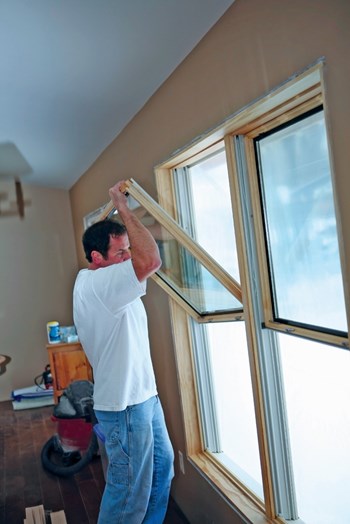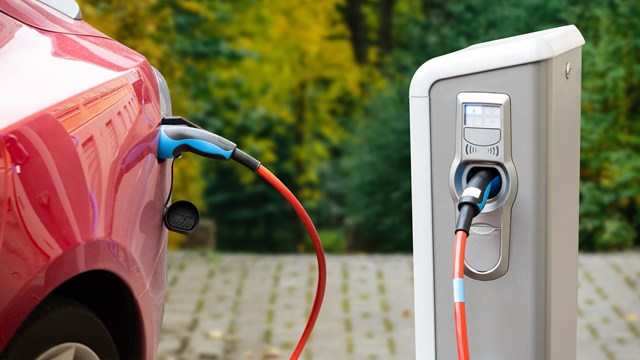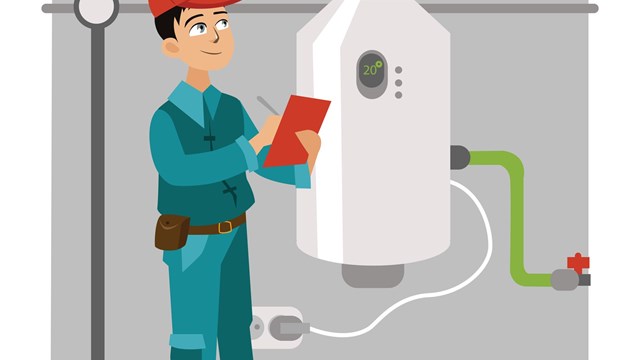
When it comes to the windows in your complex, like most people, you’re probably focused on energy conservation—keeping the air conditioning inside in the summer and the cold air outside in the winter. While you’re probably aware that not all replacement windows are created equal, when it comes to energy savings, there are other “green” alternatives that your board may wish to evaluate when selecting replacement windows.
First Steps Taken
Believe it or not, by considering replacement windows, you’re already accomplishing one of the big-picture goals for environmental sustainability. Updating and maintaining the existing housing stock is environmentally friendlier than tearing down and rebuilding (not that you were considering that, but it’s good to know.)
Along the same lines, make sure the windows you’ll use have a long life cycle. If you’ve never replaced the windows in your property, you’ll want to ascertain the guaranteed aspects of various window products from every potential window supplier, as well as, the overall projected life span of these window products. One obvious reason to undertake such an analysis is to examine the annual cost of the windows; however, the environmentally correct choice is to select the windows that have the longest projected life span. A longer-life window product means less waste in landfills, fewer trees cut down, less pollution and less energy wasted in the manufacture and distribution of replacement windows.
Assessing the experience of other properties can be beneficial to your association or management team. Check with HOAs that have replaced their windows within the last five to seven years, see how happy they are now with the results, and ask when they expect to replace those windows. Their answers might surprise you.
Beyond the Macro Impact
Being a good world citizen can be quite satisfying. But in the end, cutting energy usage for your residents is critical in order to meet their objectives, such as controlling energy bills while keeping living spaces comfortable year-round. While many window replacement companies focus on the window frames to prevent air drafts, retaining heat or air conditioning, most of the surface area of a window is glass and not all glass is created equal. Some panes have special coatings to heat rooms in the winter and keep them cool in the summer. Some manufacturers trap special gases between double-paned windows to reduce heat transfer through the glass. To get the best possible combination of these features, look for windows with high ratings from the International Energy Conservation Code (IECC). Good quality replacement windows will tell you how much more energy efficient they are compared to ordinary dual-pane glass with separate ratings for both winter and summer.
Another aspect of glass consumers should be clear about, protection. And not in the sense of buying glass that won’t break. Energy-efficient glass (often called “Low-E”) will help your residents protect their furniture, carpets, and wall coverings from fading due to expose to ultraviolet light—something that’s probably equally important to you in common areas of your complex.
The Frame Game
Although Shakespeare didn’t ask, “what’s in a frame?” HOA and building administrators most definitely should. In evaluating frames, there are three key qualities to consider: strength, durability, and the level of volatile organic compounds (VOCs) that the frame contains.
Frames can be built of vinyl, aluminum, wood or composite materials. Composite materials generally offer the most strength and are the most environmentally friendly in terms of manufacturing process. Several major manufacturers have developed composite materials that not only improve window performance, but minimize their impact on the environment by decreasing the dependence on forested woods, using reclaimed materials and decreasing the amount of VOCs released during the manufacturing process.
The release of VOCs isn’t just a concern during the manufacturing of a window. After installation, windows continue to impact the quality of the indoor air by the amount of VOCs they release. Vinyl windows tend to release the most VOCs because of the nature of the material. Plastics oxidize and degrade over time, releasing volatile organic compounds into living spaces that can affect people’s allergies, asthma, and overall health.
Though they are not exactly the same, strength and durability—the other two key factors—are related. Obviously, window frames in older buildings need to withstand the installation and use of window air conditioners. But, let’s face it, not too many building owners and associations are facing that situation. In window parlance, the term “strength” relates to a window’s ability to resist wind and storms. Windows expand and contract based on their exposure to heat, cold, and sunlight, and some materials are more resilient than others. Look for materials that can stand up to repeated weather cycles while retaining their original shape and position.
Again, composite materials have good rigidity, strength and are environmentally sound. When it comes to durability, we return to one of our opening points—how long will the windows last? Durability comes into play in terms of weather resistance, the need for regular repainting (very bad for the environment on many levels), and the impact another replacement down the road will have on the environment. While it’s important to look at frames when examining durability, it’s equally important to look at where and how the sashes interface with the frame. Are the materials used to create a seal, help the window slide, and keep the window locked well-made? Do the sashes function smoothly? If the sashes tilt in for cleaning, are the mechanisms that do this sufficiently sturdy?
In addition to the green aspects of replacement windows, windows should also appeal to your aesthetic sense and fit the style and look of your building. That’s an article for a future issue—but the next time your association administrators meet with a replacement window company, be sure to ask, “How green are your windows?”
Geri Kruszewski is marketing/events manager for Cranford-based window company Renewal By Andersen.






Leave a Comment